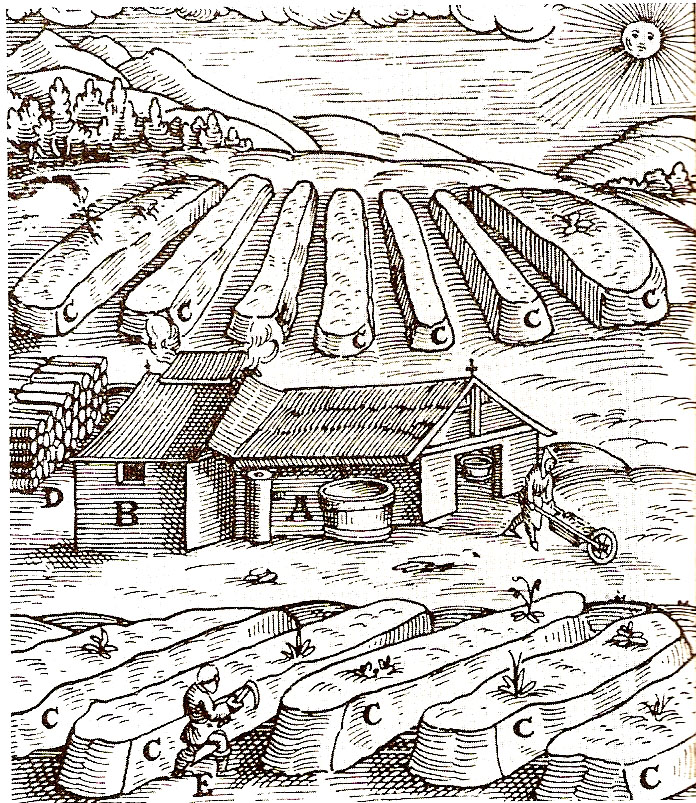Dijon, France/dijon612
Previous | Home | NextThe saltpeter works must have appeared much like this old 1598 woodcut. The rows of hills (C) were filled with filled with manure, garbage, soil, blood, ash, and lime. The saltpeter hills were also soaked with urine from time to time. The nitrogenous compounds released ammonia, which were oxidized to nitrates. The combination of ashes and lime held the pH 7-8, optimum for bacterial action (of course the early workers didn't know about pH or microbes). After a year or so the "ripened" saltpeter beds were extracted in the work shed (B) (see next photo). The bucket (A) collected rainwater. A cord of wood (D) was used as fuel for the separations in the shed (notice the smoke arising out of the shed, coming from a heated pot inside). A saltpeter digger (E) would remove soil "ripe" for processing. The German word for saltpeter digger was Salpetergraber; the French word was salpêtrier.
